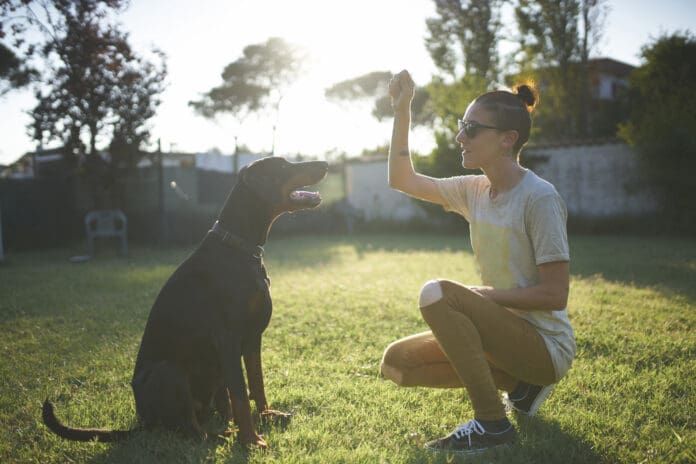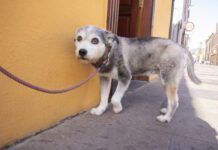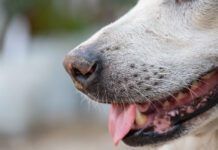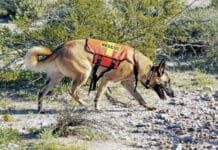Despite conventional wisdom, a wagging tail doesn’t always mean a happy dog. The following abridged guide to canine communications will help you become a skilled translator. [ See also, “Learn to Read Your Dog’s Body Signals,” here.]
Remember that breed characteristics can complicate the message; the relaxed ears and tail of an Akita (prick-eared, tail curled over the back) look very different from the relaxed ears and tail of a Golden Retriever (drop-eared; long, low tail).
Also note that if body language vacillates back and forth it can indicate ambivalence or conflict, which may precede a choice toward aggression.
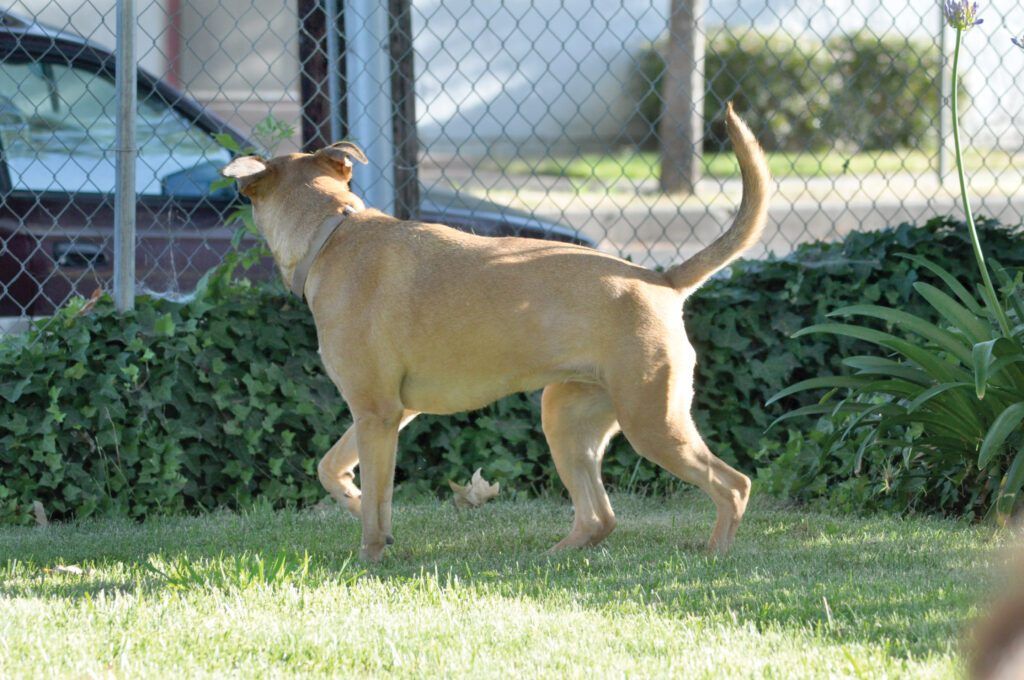
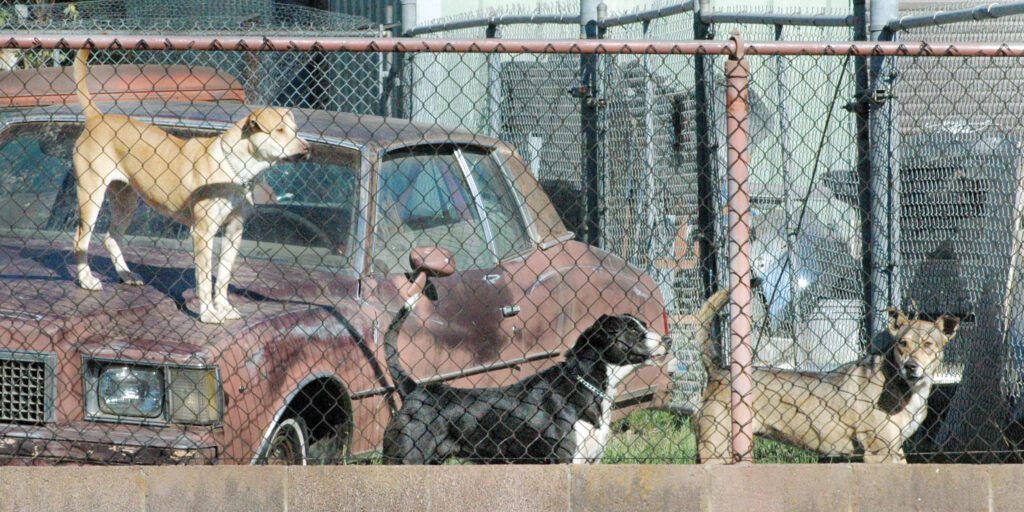
Tail
Tucked under: Submissive/appeasing, deferent, or fearful
Low and still: Calm, relaxed
Low to medium carriage, gently waving: Relaxed, friendly
Low to medium carriage, fast wag: Submissive/appeasing or happy, friendly
High carriage, still/vibrating or fast wag: Tension, arousal, excitement; could be play arousal or aggression arousal
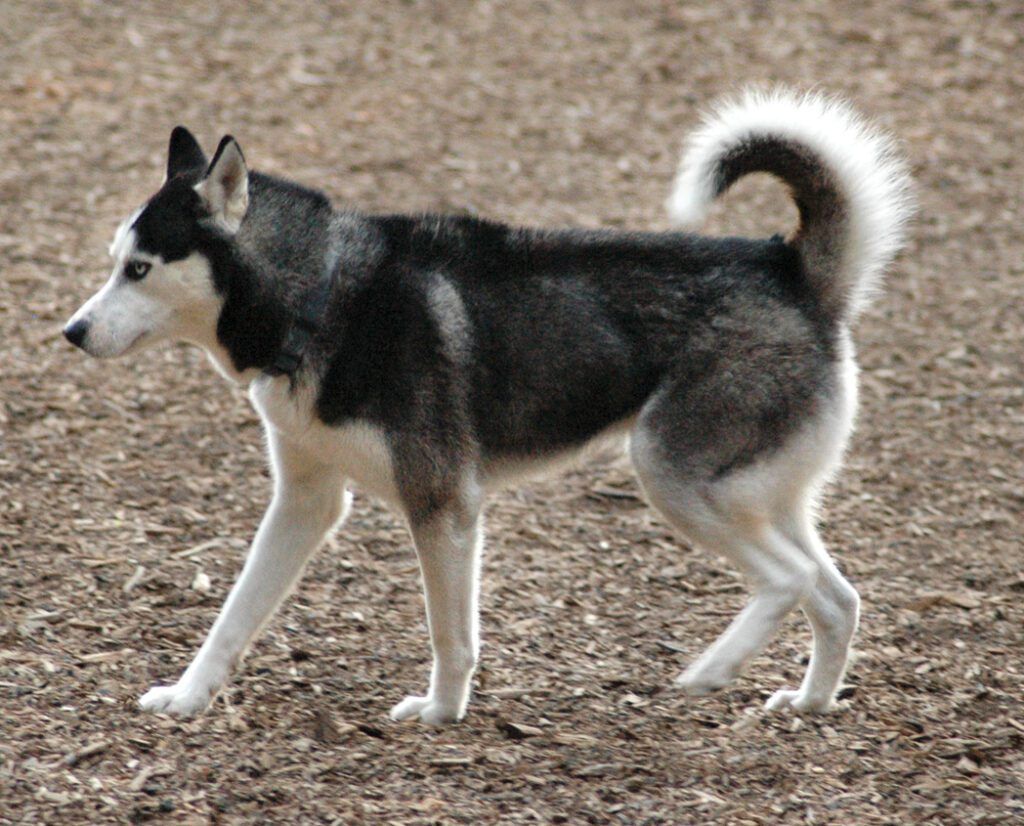
Ears
Pinned back: Submissive/appeasing, deferent, or fearful
Back and relaxed: Calm, relaxed, friendly
Forward and relaxed: Aware, friendly
Pricked forward: Alert, excitement, arousal, assertive; could be play arousal or aggression arousal.
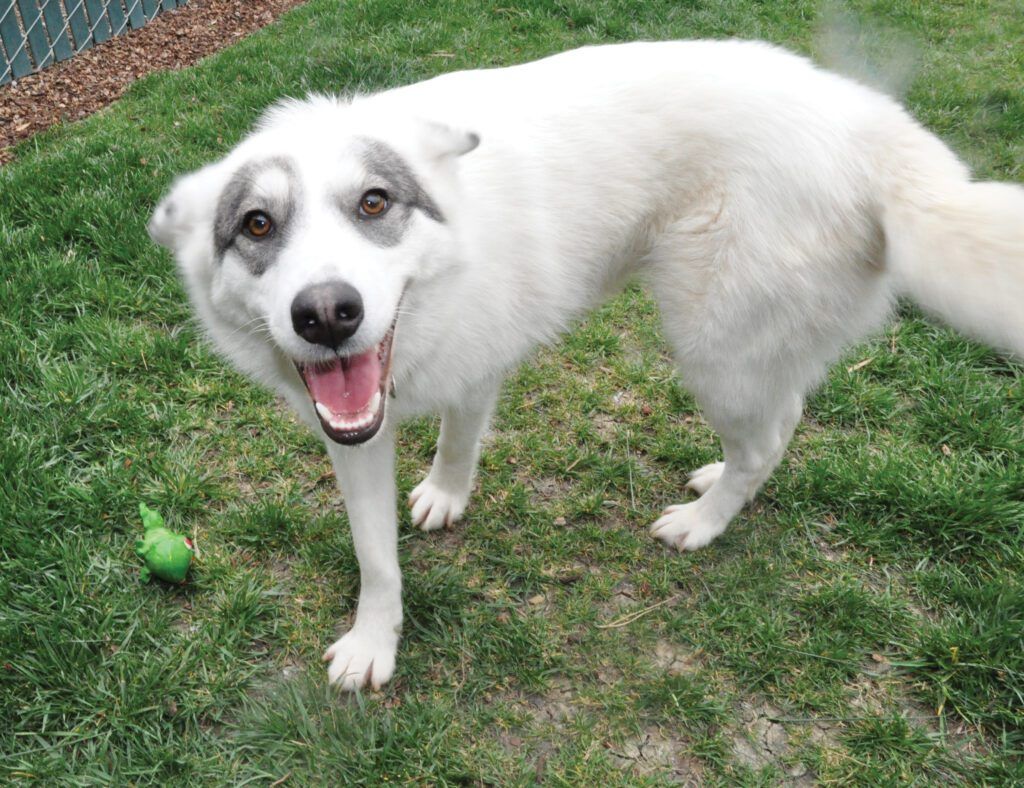
Eyes
Averted, no eye contact: Submissive/appeasing, deferent, or fearful; may be a subtle flick of the eyes, or may turn entire head away
Squinting, or eyes closed: Submissive/appeasing, happy greeting
Soft, direct eye contact: Calm, relaxed, friendly
Eyes open wide: Confident, assertive
Hard stare: Alert, excitement, arousal; could be play aroused in play or aroused in aggression
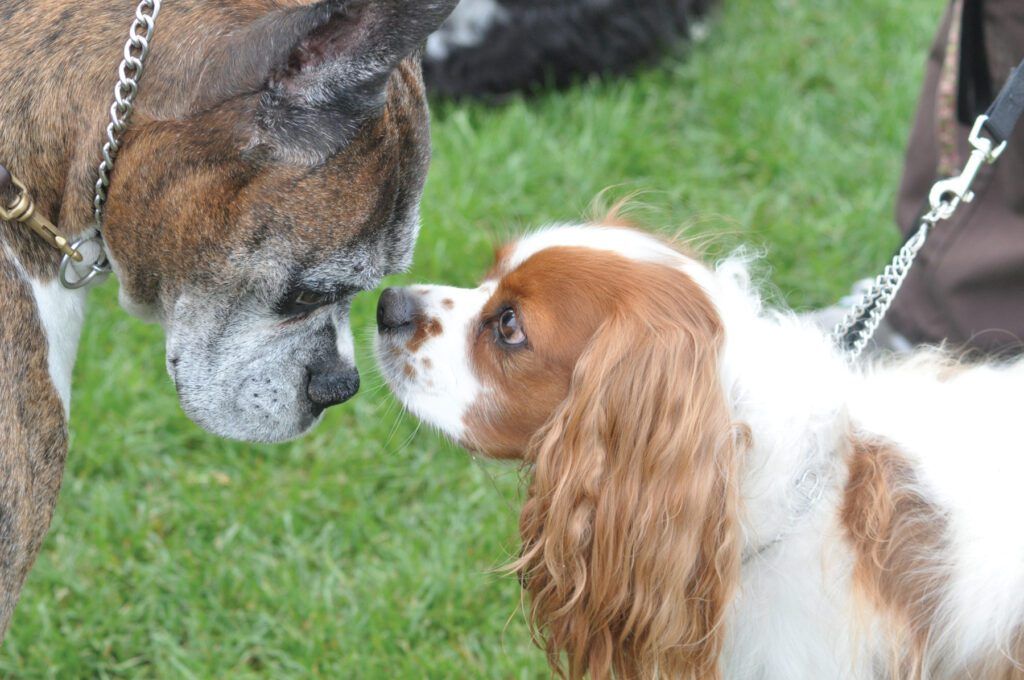
Mouth
Lips pulled back: Submissive/appeasing or fearful (may also be lifted in “submissive grin” or “aggressive grin”)
Licking lips, yawning: Stressed, fearful – or tired!
Lips relaxed: Calm, relaxed, friendly
Lips puckered forward, may be lifted (snarl): Assertive, threatening.
Hair
Piloerection: Also known as “raised hackles,” this is simply a sign of arousal. While it can indicate aggression, dogs may also show piloerection when they are fearful, uncertain, or engaged in excited play.
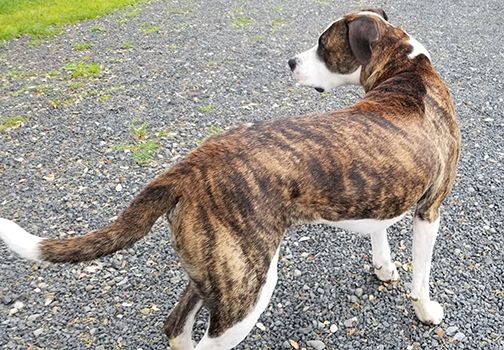
Body Posture
Behind vertical, lowered; hackles may be raised: Could be submissive and/or appeasing or fearful
Vertical, full height: Confident, relaxed
Ahead of vertical, standing tall; hackles may be raised: Assertive, alert, excitement, arousal; could be play arousal or aggressive arousal
Shoulders lowered, hindquarters elevated: A play bow is a clear invitation to play; the dog is sending a message that behavior that might otherwise look like aggression is intended in play.

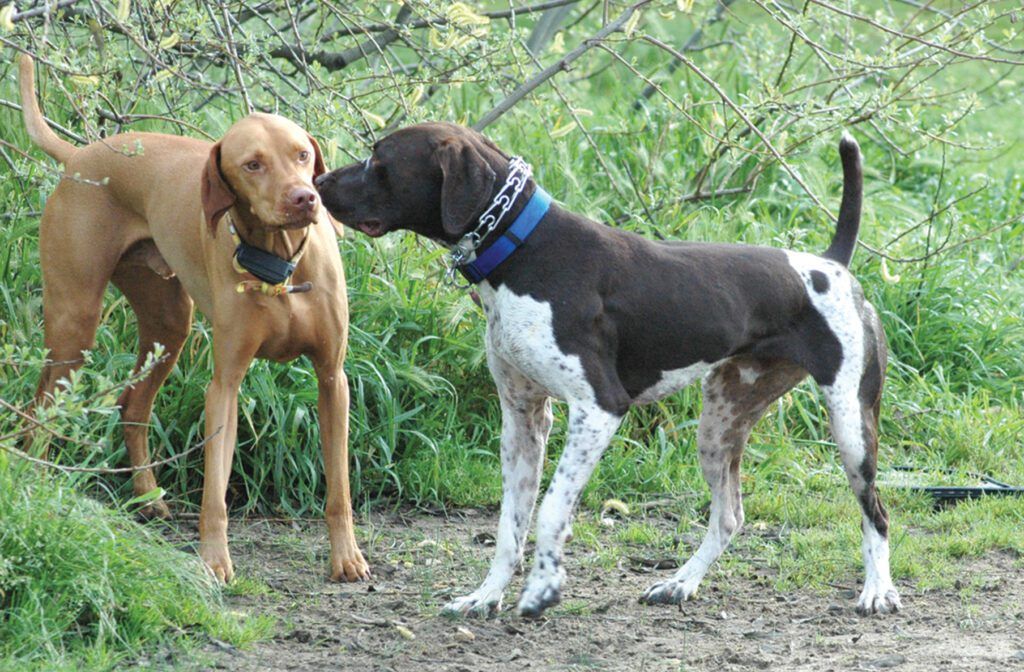
READ: Do dog cry tears?


